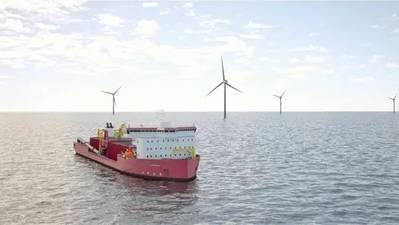

But the upgrade path is disappointingly linear, and a lot of grinding is involved in maxing it out. This is the main upgrade path that I spent most of my time working on, accounting for most of the heavy lifting in terms of improving my ship’s critical functions. Upgrading the ship’s hull largely centers around scavenging coastal shipwrecks – an activity that’s a little more monotonous than it needs to be, given how sparse resources can be, and how hard it can be to find certain crucial items like wooden planks early on. This made it important to max out my ship’s hull so it could survive the long treks to other zones, which inevitably meant traveling at night. Each species of fish only shows up in certain environments that require specialized gear to fish in, and most only appear at certain times of day, including species that are necessary to solve certain puzzles and progress the main story. But if you do want to, you’ll need to grind. Likewise, completing quests is necessary to loosely flesh out your encyclopedia of up to 128 fish, but it’s nice that I didn’t need to catch ‘em all if I didn’t want to.

They’re made more worthwhile by the fact that each one contains interesting writing that fleshes out the world’s lore or is somehow tied to the broader story, and the cast of characters are interesting and likable until the end. Following the main quest is crucial to unlocking advanced fishing rods and nets, but most objectives are bite-sized, adding up to little more than fetch quests. Thanks to all that, I often found myself pulled along with Dredge’s current, solving puzzles and gathering hidden relics as I carefully built up my ship and kept a stream of currency rolling in. Since time only moves when you move your ship or play a fishing minigame, the constant, creeping fear of being snuck up on by a rogue sunset keeps my watchful eye pinned to the clock – which conveniently sits overhead – at all times. And because there is only one limited method of fast travel, the stakes are raised even further if you find yourself adrift after dark. The Greater Marrow lighthouse remains a central landmark no matter where you are on the map, but you still need to get there safely on your own gumption if you find yourself lost at sea.

That brings balance and danger to every expedition. Of course, light attracts monsters that will quickly destroy your boat’s hull if you don’t evade them, so it’s a bit more challenging to manage than a simple fishing game. The higher it goes, the more likely it is that monsters and other obstacles will spawn, so you have to balance that against turning on lights to temporarily lower panic. Things heat up at night when the fog rolls in and your panic meter begins to increase in the darkness. Which is something that actually happens, in more than a few cases.
#Dredge series#
Tactfully breaking up its fishing minigames with these elements, Dredge gradually unveiled its hidden agenda and latched onto my brain like a series of parasites slithering onto my boat’s deck. This tension is fleshed out through genuinely interesting and well-thought-out dialogue with townsfolk between quests, and the broader story’s concealed undercurrents are cleverly pieced together in bottled notes found amidst the waves. But what starts out as a relaxing fishing trip rapidly takes a darker turn through threatening encounters with the ocean’s natural and supernatural denizens – who turn hostile after dark.

Dredge’s story is intentionally cryptic at first glance, with your ship’s bow providing minimal context to the series of events unraveling in front of your eyes.


 0 kommentar(er)
0 kommentar(er)
